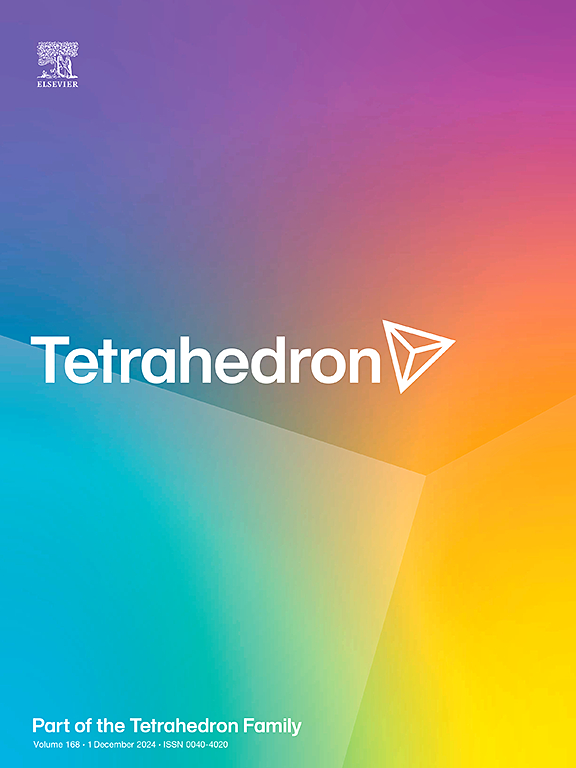Dual activation with Fe(NTf2)3 and I2: Regioselective halogenation of aromatic compounds using N-halosuccinimides (NXS)
IF 2.1
3区 化学
Q2 CHEMISTRY, ORGANIC
引用次数: 0
Abstract
Halogenation of a wide range of aromatic compounds catalyzed by Fe(NTf2)3 in the presence of a catalytic amount of I2 using N-bromosuccinimide (NBS) or N-chlorosuccinimide (NCS) in MeCN was reported. Dual activation with Fe(NTf2)3 and I2 was quite useful to accelerate the reactions. High para selectivity was realized for the halogenation of aromatic compounds possessing electron-donating groups. Solvent-free reactions were effective for the halogenation of electron-deficient compounds. Furthermore, this method was suitable for the bromination of the compounds possessing acid-sensitive groups such as acetal, dihydrofuran, aldehyde, and epoxide. In the bromination of phenol and aniline derivatives, BiCl3 was suitable to give the corresponding bromides in excellent yields. The procedure was successfully applied to the late-stage halogenation of drugs and natural products. One-pot bromination/Suzuki-Miyaura cross-coupling reactions afforded the corresponding biaryls in good yields without the removal of MeCN. When BiCl3 was used as the catalyst, one-pot bromination/Sonogashira coupling reactions gave the corresponding alkynes without the removal of MeCN. This method is practical because the catalysts are cheap and the reactions can be performed under ambient air conditions.

求助全文
约1分钟内获得全文
求助全文
来源期刊

Tetrahedron
化学-有机化学
CiteScore
3.90
自引率
4.80%
发文量
439
审稿时长
34 days
期刊介绍:
Tetrahedron publishes full accounts of research having outstanding significance in the broad field of organic chemistry and its related disciplines, such as organic materials and bio-organic chemistry.
Regular papers in Tetrahedron are expected to represent detailed accounts of an original study having substantially greater scope and details than that found in a communication, as published in Tetrahedron Letters.
Tetrahedron also publishes thematic collections of papers as special issues and ''Reports'', commissioned in-depth reviews providing a comprehensive overview of a research area.
 求助内容:
求助内容: 应助结果提醒方式:
应助结果提醒方式:


